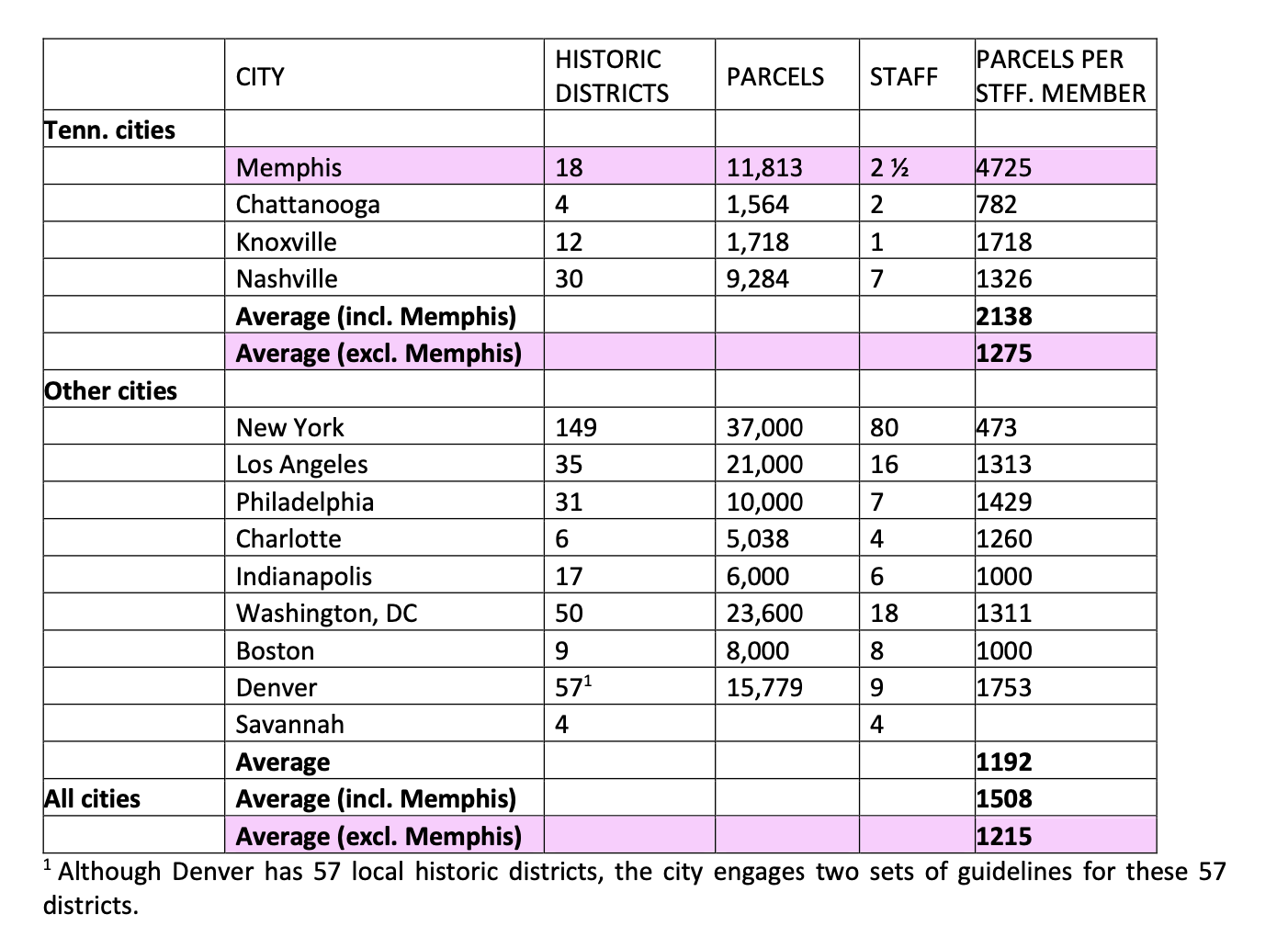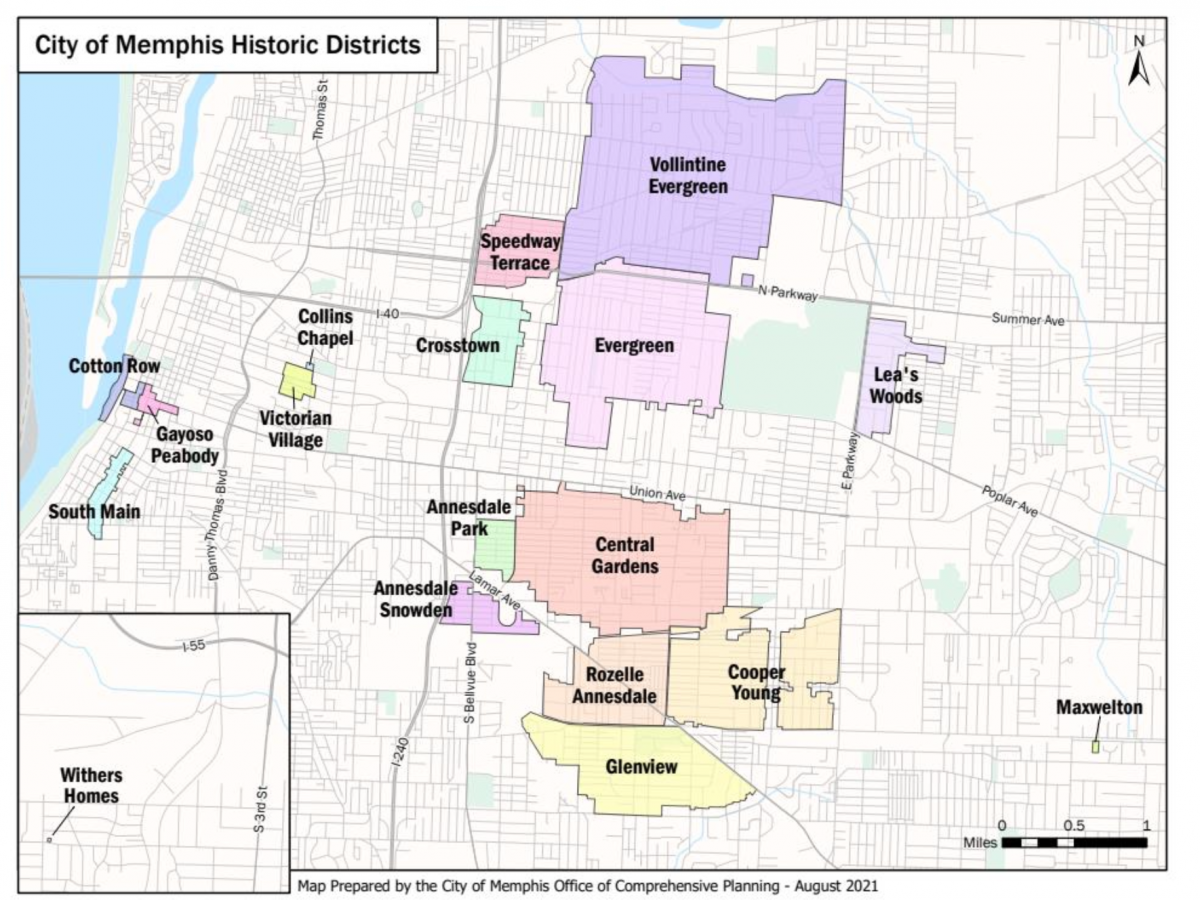Over the last 10 years, Memphis home values rose faster in landmarks districts than other parts of the city, according to a new report from the Memphis and Shelby County Division of Planning and Development.
In July, Memphis City Council members approved two new landmarks districts, Vollintine-Evergreen and Crosstown. Council members requested at the time data on all the city’s landmarks districts for home prices, demographics, values of building permits, and more. The report is included in the council’s documents for Tuesday’s committee hearings where members are slated for a review and discussion on the matter.
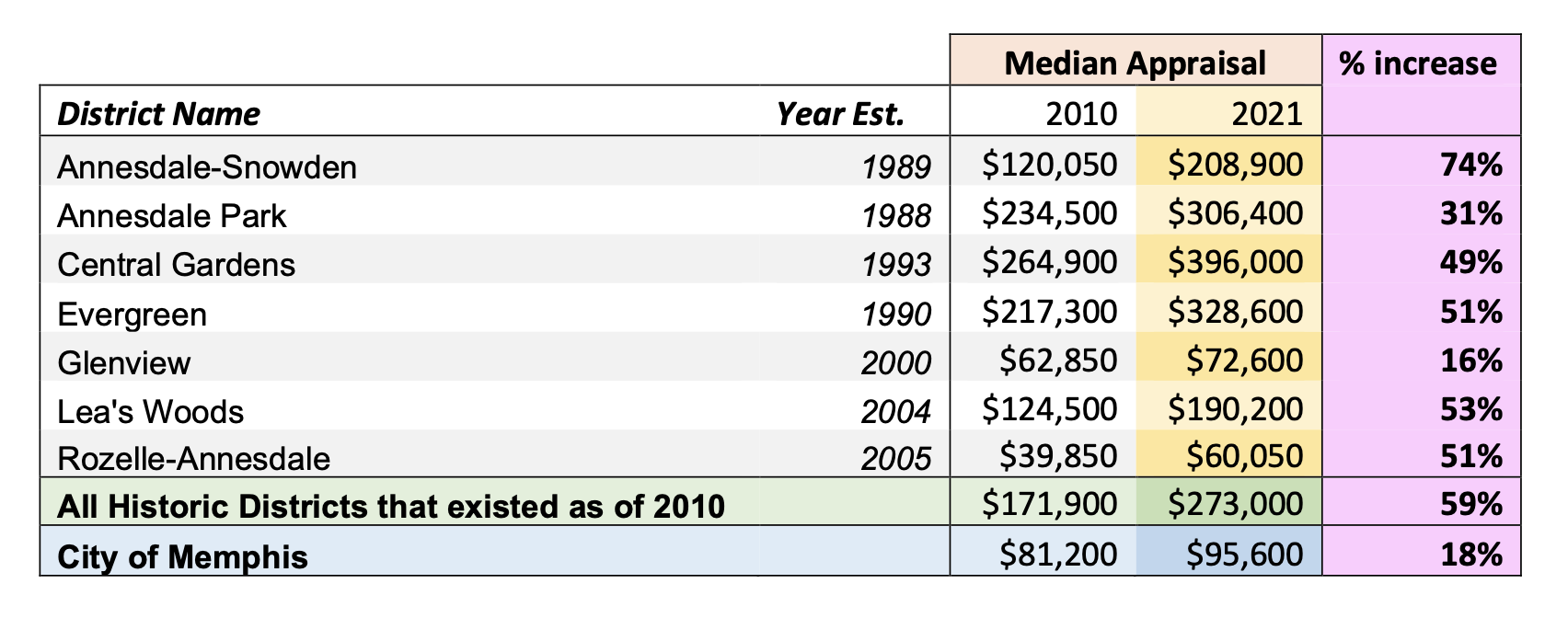
Home prices across Memphis rose 18 percent from 2010 to 2021, the report says, from a median price of $81,200 to $95,600. Median values in landmarks districts rose 59 percent in the same time period from $171,900 to $273,000.
The largest increase in home values in landmarks district was Annesdale-Snowden, where home prices rose 74 percent from 2010 to 2021, from a median price of $120,050 to $208,900. Homes in the Glenview neighborhood rose only 16 percent in the time period – lower than the Memphis average – from a median of $62,850 to $72,600.
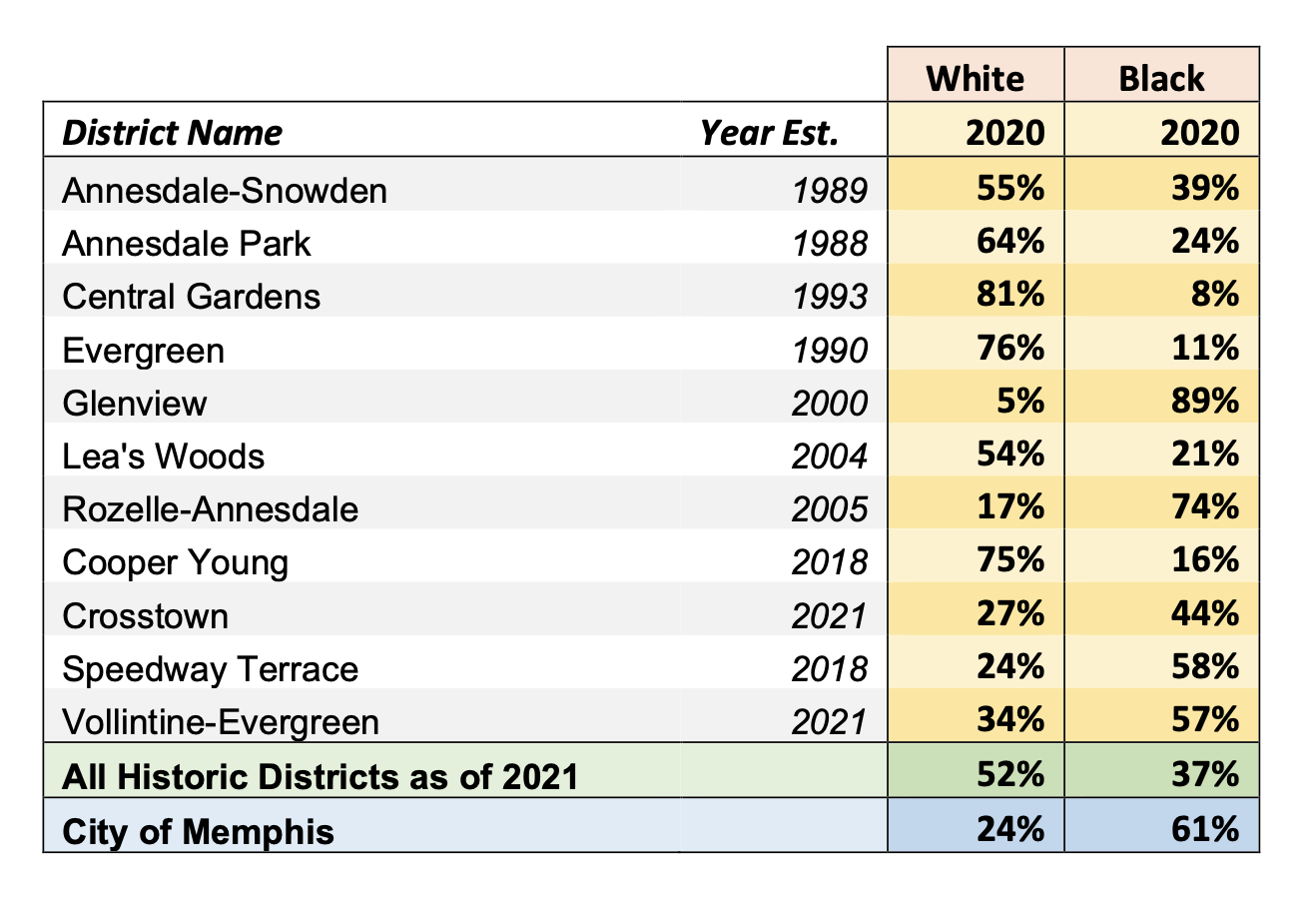
Council members also asked for demographic breakdowns of the 27,000 people in these landmarks districts. The report found that four of the districts are predominantly African-American: Glenview, Rozelle-Annesdale, Speedway Terrace, and Vollintine-Evergreen. Six of them are predominantly non-Hispanic white: Annesdale-Snowden, Annesdale Park, Central Gardens, Evergreen, Lea’s Woods, and Cooper-Young. Crosstown was found to have no predominant racial group.
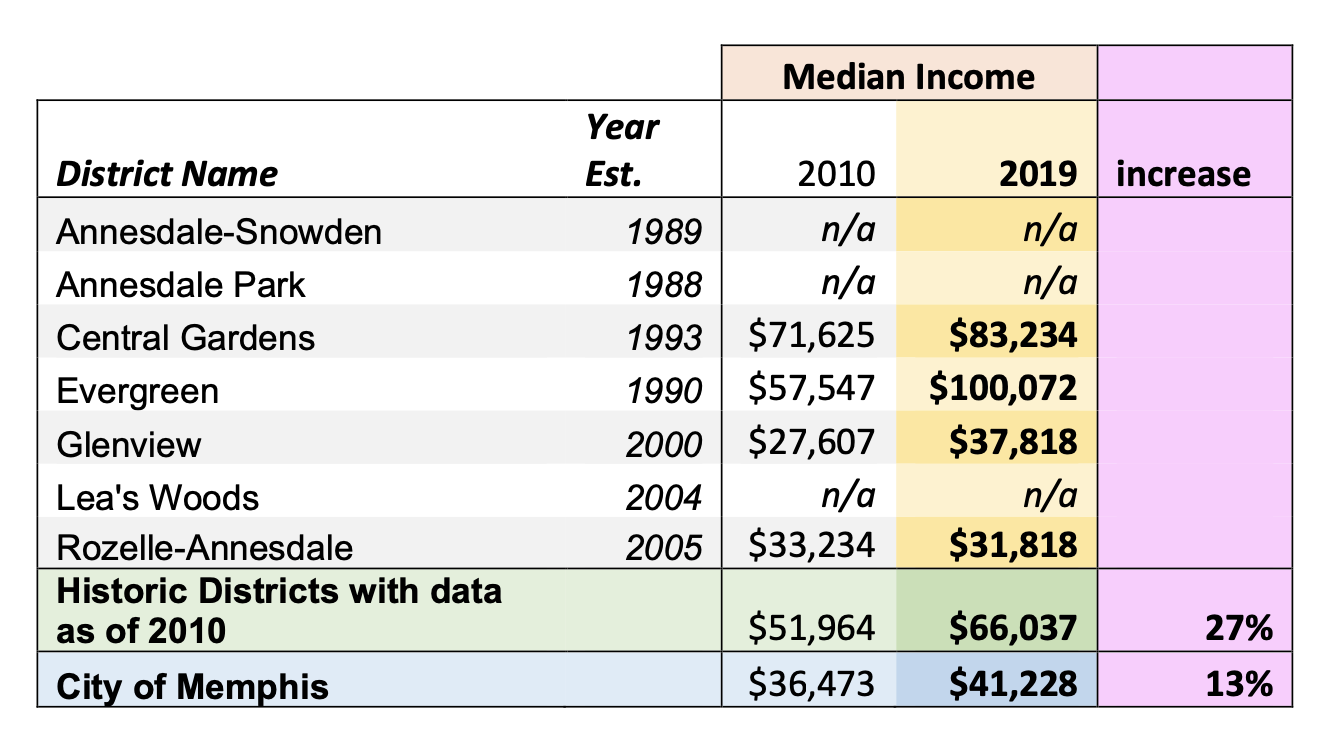
Though income data was not available for all landmark districts, incomes inside the districts rose faster than those outside of them. From 2010 to 2019, incomes of those living inside landmark districts rose by a median rate of 27 percent (from $51,964 to $66,307). Incomes for those in the rest of Memphis rose by 13 percent (from $36473 to $41,228) in the same time period.

The value of new building permits nearly doubled (up 91 percent) for all of Memphis from 2010 to 2020. The total value of new building permits across the entire city rose from $53.4 million in 2010 to $101.9 million in 2020. Building permits for all of these years totaled $748.6 million.
However, building permit values rose by 232 percent for projects inside landmarks districts. These values were $1.9 million in 2010 and were $6.3 million in 2020. Building permits for all of these years totaled $43.7 million.

Homeownership rates citywide fell from 75 percent to 66 percent in 2019. These rates were 70 percent in 2019 for those inside landmarks districts. Homeownership decreased in Central Gardens and Rozelle-Annesdale. Homeownership rates increased in Evergreen and Glenview.
Planning leaders suggest changes to the landmarks program for greater efficiency. One of these would allow more types of home improvements to be approved administratively, instead of by votes of the Landmarks Commission. Another suggestion would allow some non-consenting homeowners to remove their property from the landmarks district.
Here’s how Memphis’ landmarks district stacks up against others:
